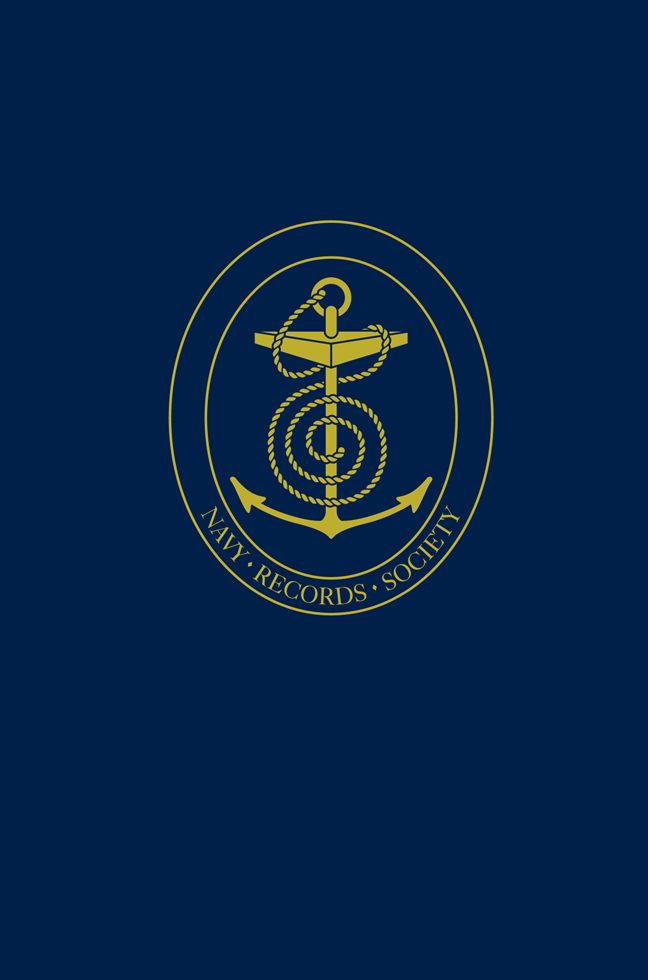Book contents
- Frontmatter
- Dedication
- Contents
- List of Plates
- Preface
- List of Abbreviations
- I The Provision of Ships for Edward I's Campaigns in Scotland, 1300–1306: Barges and Merchantmen
- II Lord Admiral Lisle and the Invasion of Scotland, 1544
- III The Journal of the Voyage of the Marigold to Iceland, 1654
- IV Neutrality, Sovereignty and Jurisdiction: Two Cases in the Admiralty Court, 1798–1805
- V The Supply of Timber for the Royal Navy, c.1803–c.1830
- VI The Journal of Lieutenant George Bedford, 1835–36: Surveying on the West Coast of Africa
- VII The Journal of Lieutenant Charles Knowles in the River Niger, 1864
- VIII The Diary of Signal Bosun Henry Eason: The Naval Brigade in the Zulu War, 1879
- IX The Autobiography of Chief Gunner Alexander Grant: HMS Lion at the Battle of Jutland, 1916
- X Australian Naval Defence: Selections from the Papers and Correspondence of Captain W. H. C. S. Thring, 1913–34
- XI The Relief of Admiral North from Gibraltar in 1940
- XII The Development of an Independent Navy for Australia: Correspondence between the First Naval Member and the First Sea Lord, 1947–59
- Contents of Previous Naval Miscellany Volumes
- Index
- Miscellaneous Endmatter
V - The Supply of Timber for the Royal Navy, c.1803–c.1830
Published online by Cambridge University Press: 05 March 2024
- Frontmatter
- Dedication
- Contents
- List of Plates
- Preface
- List of Abbreviations
- I The Provision of Ships for Edward I's Campaigns in Scotland, 1300–1306: Barges and Merchantmen
- II Lord Admiral Lisle and the Invasion of Scotland, 1544
- III The Journal of the Voyage of the Marigold to Iceland, 1654
- IV Neutrality, Sovereignty and Jurisdiction: Two Cases in the Admiralty Court, 1798–1805
- V The Supply of Timber for the Royal Navy, c.1803–c.1830
- VI The Journal of Lieutenant George Bedford, 1835–36: Surveying on the West Coast of Africa
- VII The Journal of Lieutenant Charles Knowles in the River Niger, 1864
- VIII The Diary of Signal Bosun Henry Eason: The Naval Brigade in the Zulu War, 1879
- IX The Autobiography of Chief Gunner Alexander Grant: HMS Lion at the Battle of Jutland, 1916
- X Australian Naval Defence: Selections from the Papers and Correspondence of Captain W. H. C. S. Thring, 1913–34
- XI The Relief of Admiral North from Gibraltar in 1940
- XII The Development of an Independent Navy for Australia: Correspondence between the First Naval Member and the First Sea Lord, 1947–59
- Contents of Previous Naval Miscellany Volumes
- Index
- Miscellaneous Endmatter
Summary
The crisis in the supply of Naval ship timber in 1803–04 was the result of two related pressures. The first was the expansion of British Naval commitments after war with France was renewed in May 1803. The British fleet then comprised approximately 608 ships of all sizes, 81 of them being 74-gun ships, the backbone of the line of battle. By 1813 there were a total of 899 ships, 143 of them 74s. The victory at Trafalgar did not eliminate wearisome, wearing blockade of enemy ports and the very success of the Navy increased its tasks. Defeated at sea, French imperial power expanded dramatically on land. From 1806 the introduction of Napoleon's Continental System, his determination to outbuild Britain by sea and, after 1812, a war with the United States of America, imposed fresh duties calling for more ships. To meet these commitments and retain British Naval dominance, a regular, reliable and, if possible, reasonably priced supply of ship timber was essential and was becoming more difficult to acquire.
In 1801 the annual timber consumption in the royal dockyards was over 36,000 loads. After 1803 it rose to 53,000 loads, in 1812 it had reached 74,000 loads, and although this figure fell with peace, it fell only to the figure for about 1803. After 1815 Britain was concerned to maintain a navy of a two-power standard against France and Russia and old 74s were replaced by 80-gun ships, heavier, longer, more powerful and consuming more timber. Yet defence costs were being reduced in deference to peace and Naval estimates were fixed at approximately £6 million annually until 1830.
The standard unit of measurement for ship timber was the load, of between 40 and 50 cubic feet. The average oak of ship timber size contained approximately one such load and provided, approximately, a ton of shipping. An average 74-gun ship, between 1,600 and 1,900 tons, required about 3,000 loads of timber, mainly oak but also elm, beech, ash and fir, and was built at an approximate total cost of £60,000, of which about £35,000 represented hull timber. The masts and yards cost an additional £3,000–4,000.
The royal forests could only supply a fraction of the Navy's needs, approximately 4,000 loads annually.
- Type
- Chapter
- Information
- The Naval Miscellany , pp. 191 - 234Publisher: Boydell & BrewerFirst published in: 2024



